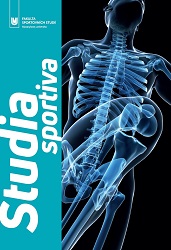Analýza vývoje výkonnosti v běhu mužů na 800 m v ČR 1945–2016
Analysis of performance running men 800 m in the Czech republic between 1945–2016
Author(s): Petr BahenskýSubject(s): Sports Studies
Published by: Masarykova univerzita nakladatelství
Keywords: 800 m; history; development of performance; development tendencies;Czech Republic;
Summary/Abstract: To overcome the performance of the previous generation is the goal of every top athlete. Level of performance continuously improving in all disciplines, including the 800 m run. Through professional and statistical analysis of time series, we have identified the circumstances that led to 800-meter performance changes from the end of World War II to the present. Many aspects influence development; in the 20th century, it was initially even, from the mid-1960s to the end of the 1980s, the performance curve was fluctuating, slightly increasing. The highest performance period for a wider base is in the 70’s and especially in the 1980’s. After 1989, there was a significant decline in performance and, after 1996, performance stagnation. Performance has stabilized at a lower level than in the mid-1960s. The narrow peaks are the same peak performance period, but after 1989 it did not fall, even a peak performance period occurred. Changes in performance include levels of state support for sport, social change, training development, and the functioning of centers. Although there has been a partial renewal of talent support, there is no longer a long-term increase in performance. The performance of the best 3 runners in the Czech Republic closely correlates (r = 0.857) with the performance of the broad base (average of the 50 best runners). Still, after 1989, the level of elite runners is relatively high, despite the lower level of the broad base.
Journal: Studia sportiva
- Issue Year: 11/2017
- Issue No: 2
- Page Range: 55-67
- Page Count: 12
- Language: Czech

